Last updating 4-July 2024 by Hoang Quy
Abstract
Cat Tien National Park, situated 150 km from Ho Chi Minh City, Vietnam, is celebrated among birdwatchers for its diverse habitats and exceptional avian biodiversity. The park’s lowland evergreen forests and wetlands harbor 343 bird species, including endemics like the Orange-necked Partridge and Germain’s Peacock Pheasant. Birding highlights include Crocodile Lake for species such as the Black-and-red Broadbill and various kingfishers, and Heaven Rapids for owls and hornbills. Birding hides strategically located near the park headquarters offer prime viewing opportunities with a daily fee, while accommodations range from park headquarters motels to rustic lodges like Forest Floor Lodge, catering to different preferences and budgets.
This abstract succinctly captures Cat Tien National Park’s allure for bird enthusiasts, emphasizing its notable bird species, key birding locations, associated hide fees, and available accommodations, including those situated within the park itself.
Key notes when birding in Cat Tien National Park
- Located 150 km from Ho Chi Minh City
- Habitat: Lowland evergreen forest
- Key Species: Orange-necked Partridge, Germain’s Peacock Pheasant, Siamese Fireback, Green Peafowl, Banded Kingfisher, Lesser Adjutant, Woolly-necked Stork, Blue-rumped and Bar-bellied Pittas, Pale-headed and Black-and-buff Woodpeckers, Black-and-red, Banded, Dusky Broadbill, Blyth’s Frogmouth, Grey-faced Tit Babbler.
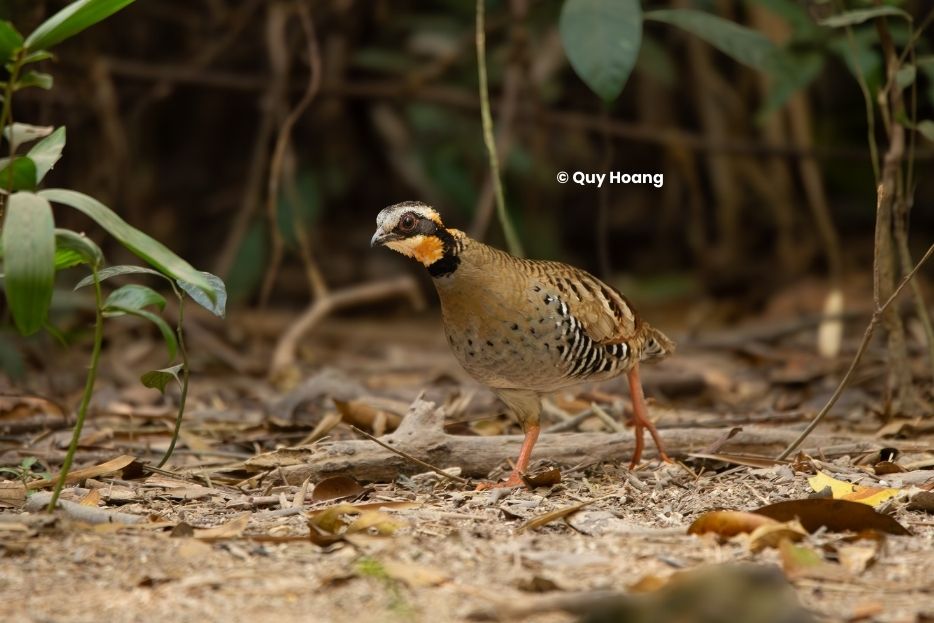
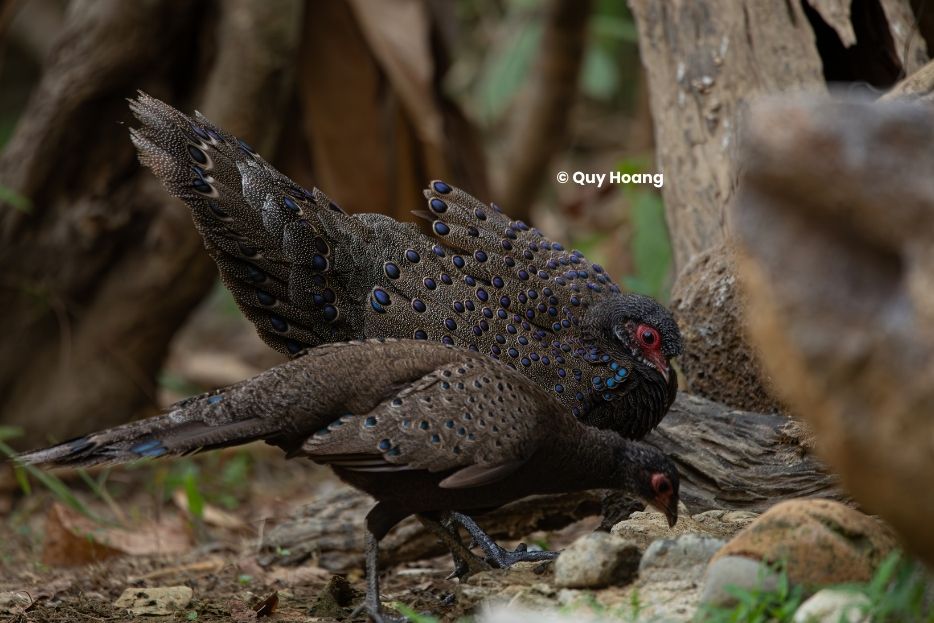
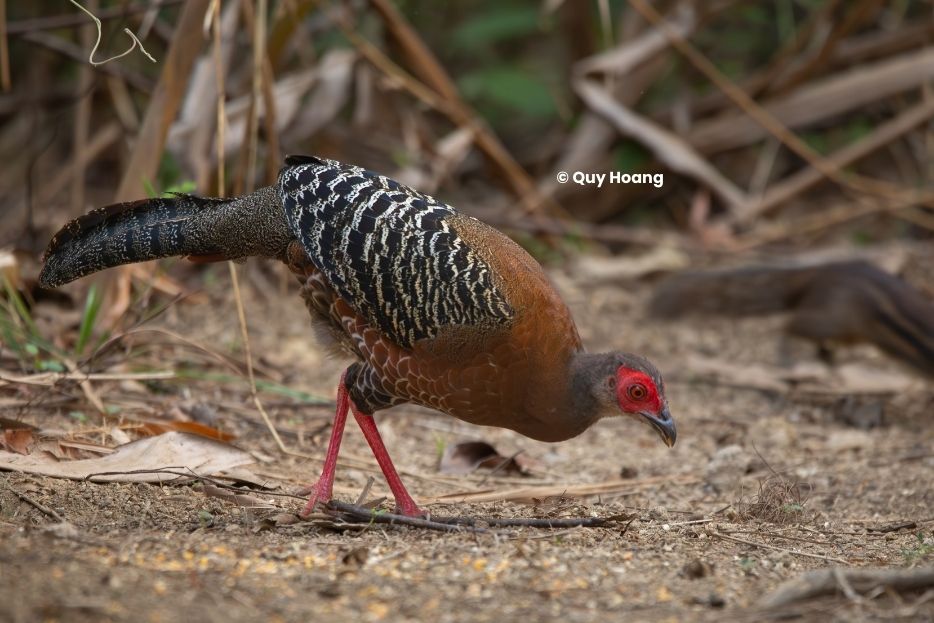
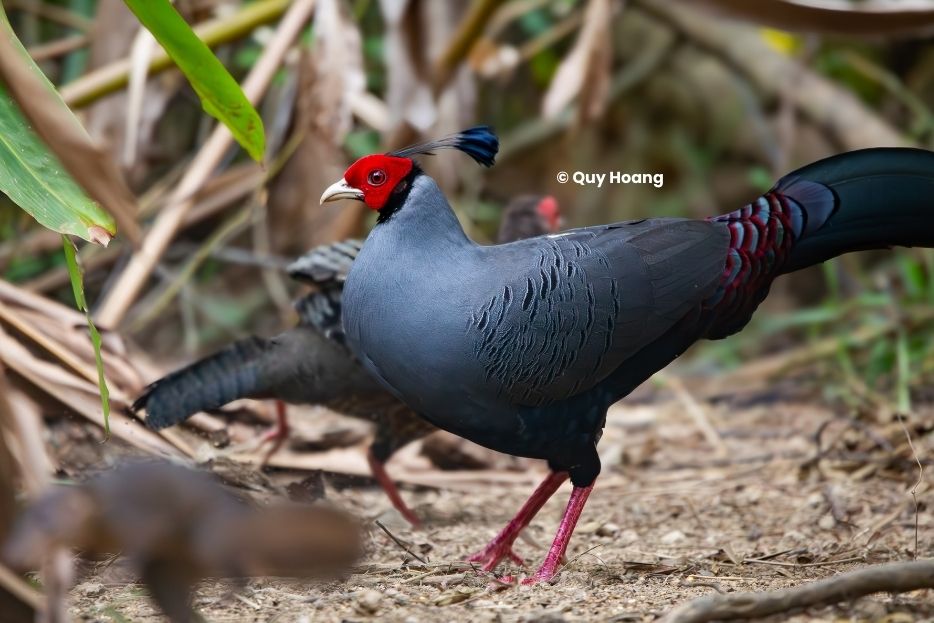
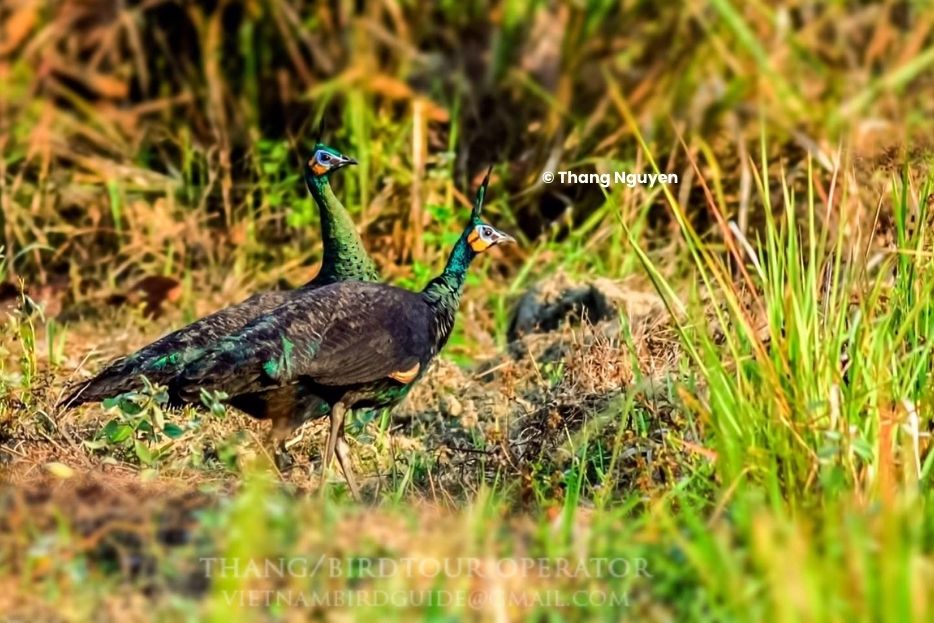
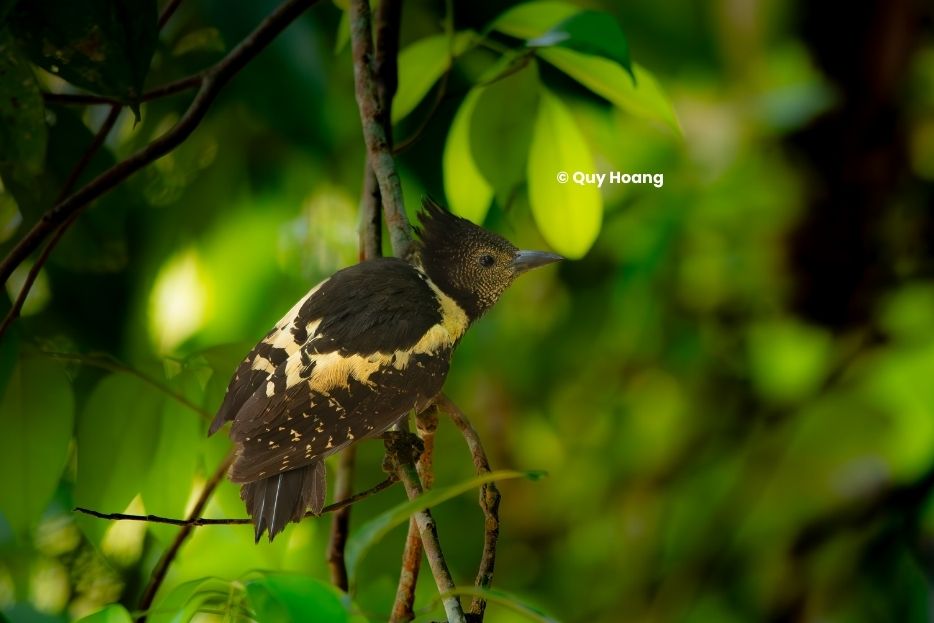
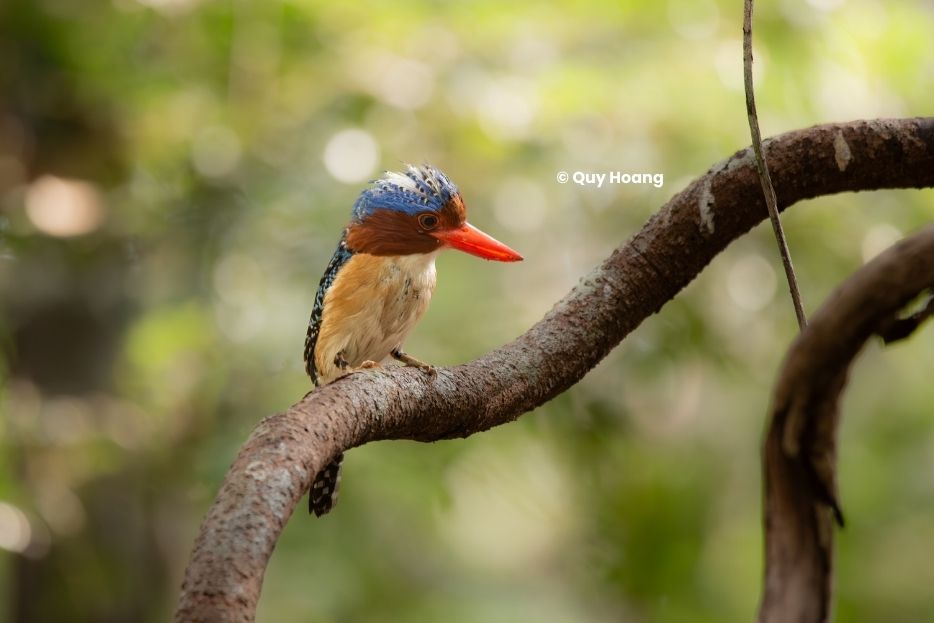
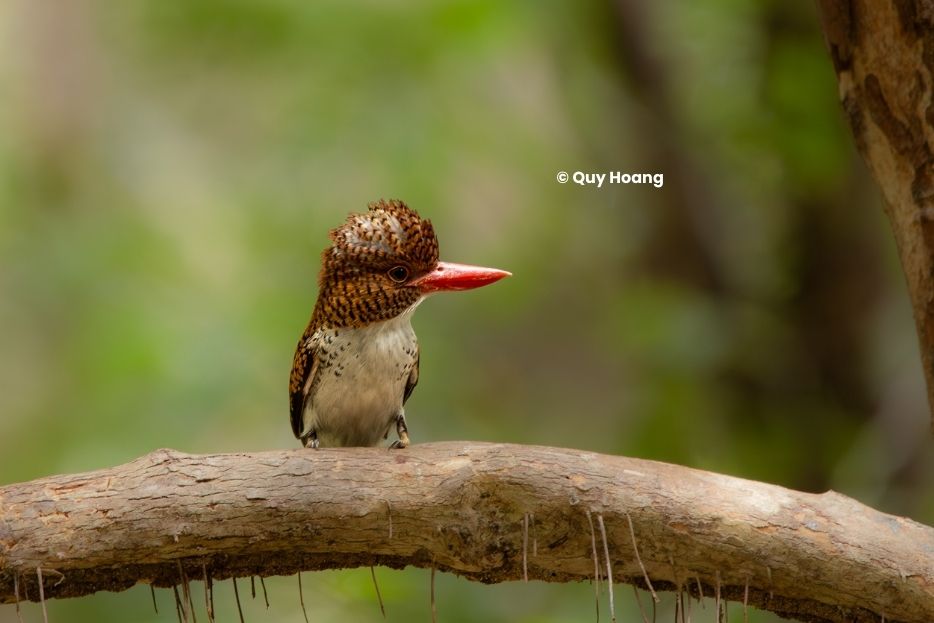
- Other specialties: Gaur, Black-shanked Douc, Pygmy Slow Lois.
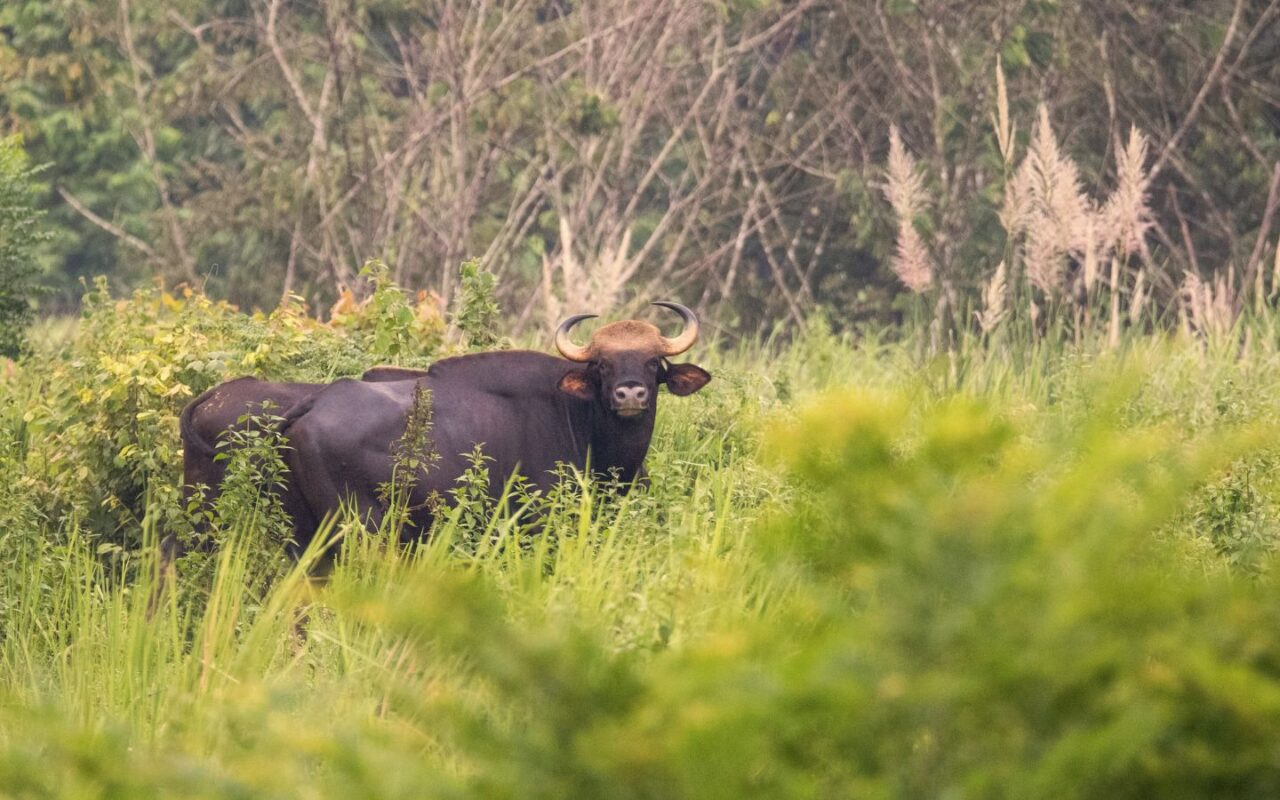
Best time for visit: December to April
![How to Birding in Cat Tien National Park 10 How to Birding in Cat Tien National Park [update 2023]](https://wanee.asia/wp-content/uploads/2023/08/image-1.png)
Why birding in Cat Tien national Park?
Cat Tien National Park’s Diverse Habitats
Cat Tien National Park supports a variety of habitat types, including primary and secondary lowland evergreen forests dominated by species in the Dipterocarpaceae; primary and secondary lowland semi-evergreen forests, dominated by Lagerstroemia spp; freshwater wetlands with open lakes and seasonally inundated grasslands, containing Saccharum spontaneum, S. arundinaceum, and Neyraudia arundinacea; flooded forest, dominated by Hydnocarpus anthelmintica mixed with Ficus benjamina; and a range of secondary habitat types, including grassland and areas dominated by bamboo.

Bird Species and Rich Biodiversity
Cat Tien National Park is home to 343 bird species as of July 2024, making it a haven for birdwatchers seeking both common and rare species across its diverse landscapes. The park also boasts a remarkable biodiversity with 76 mammal species, including iconic animals like the Asian Elephant (Elephas maximus), Eurasian Wild Pig (Sus scrofa), Sambar (Cervus unicolor), and Gaur (Bos gaurus). Among these, the Lesser One-horned Rhinoceros (Extinct 🙁 ), once a resident, tragically became extinct in recent years. Of the large mammal populations at Cat Tien National Park, the most globally significant one is that of the Lesser One-horned Rhinoceros.
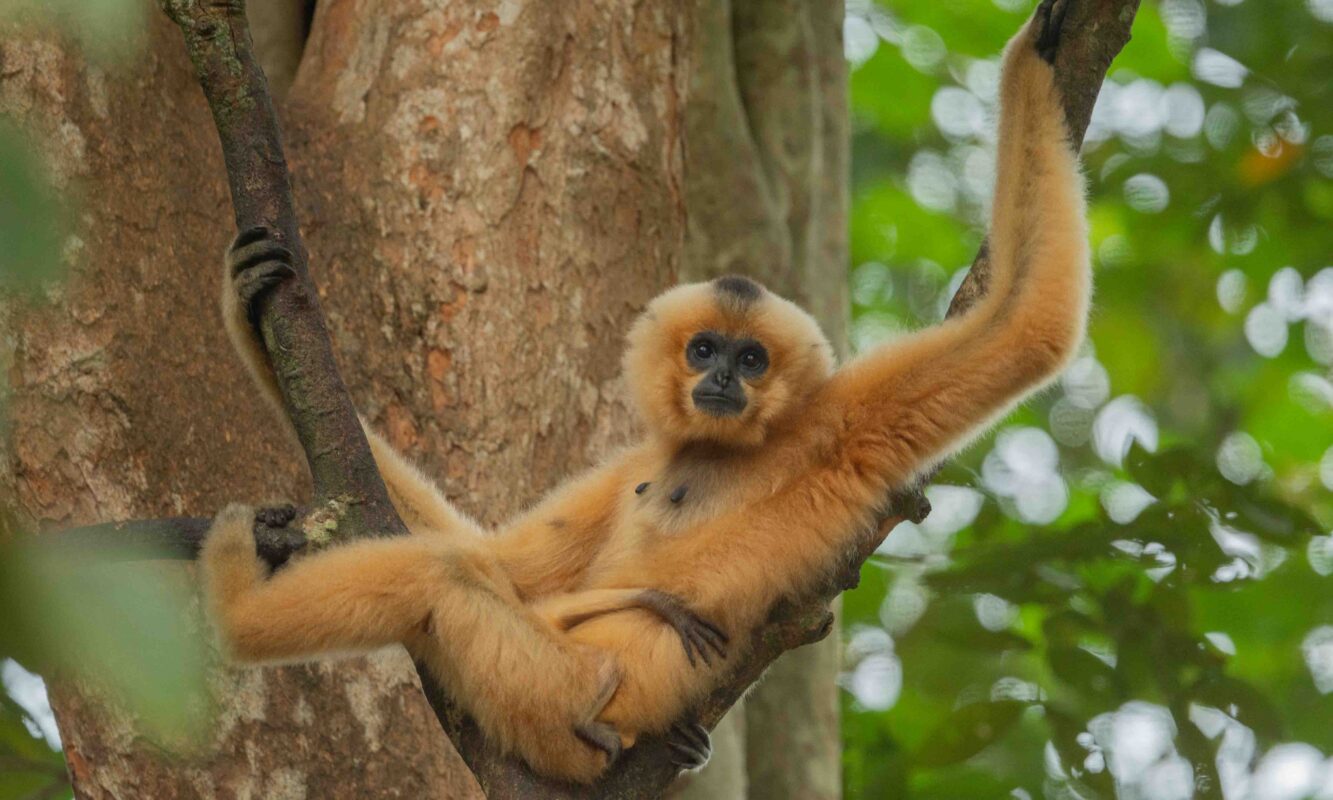
This is the only known population of the species in mainland South-East Asia and the only known population of the sub-species R. s. annamiticus in the world. However, the population size and range of this species at the national park have declined over the last two decades, and current estimates put the population size at seven or eight individuals and the range at 6,500 ha. Additionally, the park supports 74 reptile species, 35 amphibian species, 99 fish species, and 435 butterfly species.
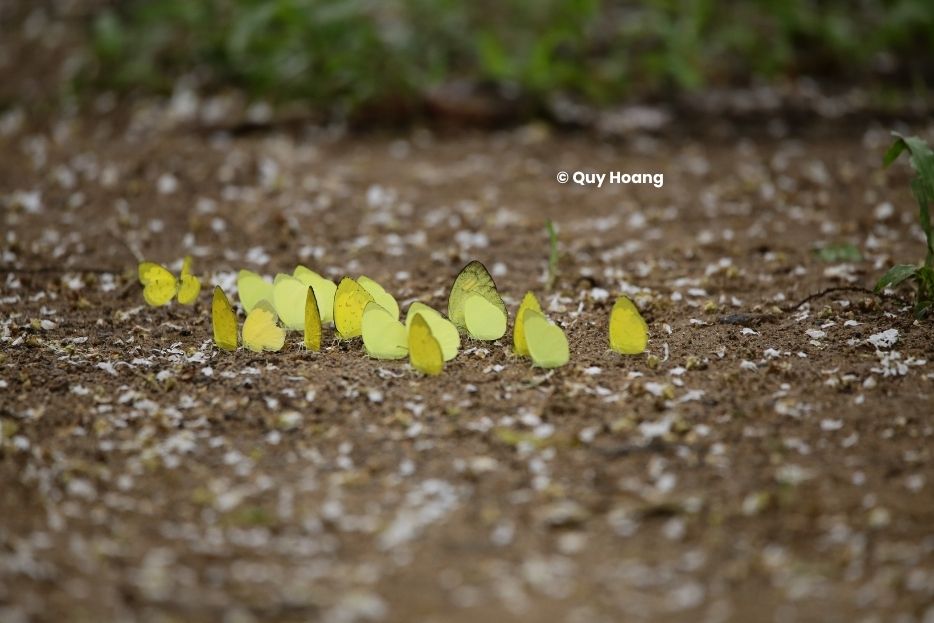
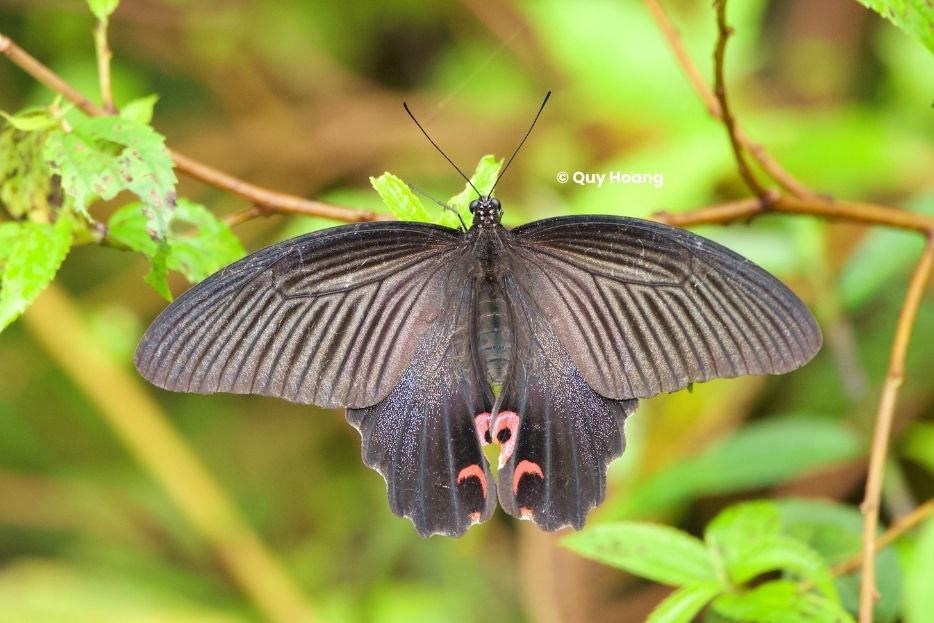
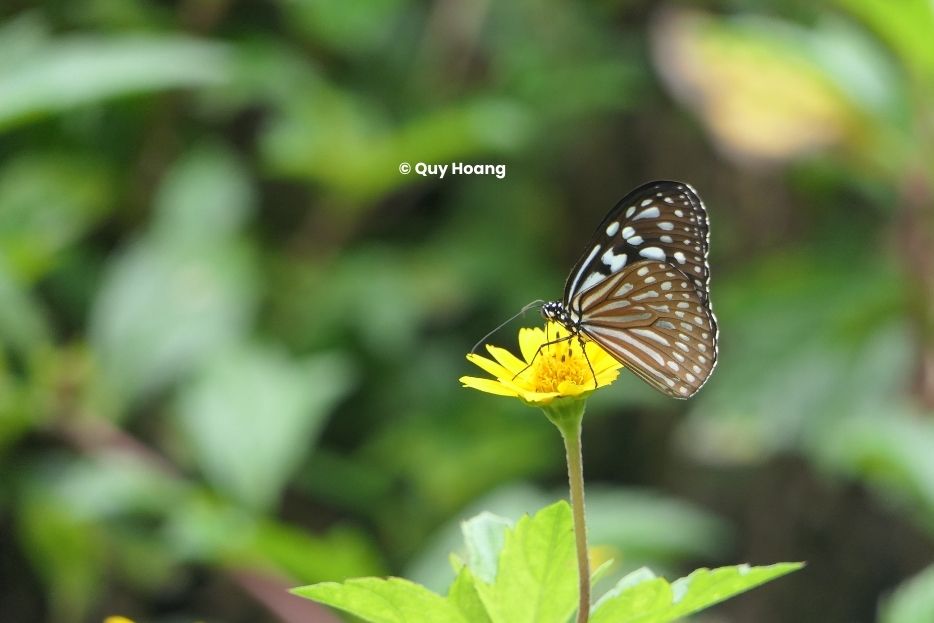
Effective Conservation and Wildlife Viewing
Conservation efforts in Cat Tien are robust, supported by effective governance that ensures not only the protection of birds but also other wildlife such as reptiles, amphibians, and insects. Unlike many parts of Vietnam where such sightings require extensive efforts, Cat Tien offers relatively accessible opportunities for observing these diverse species in their natural habitats. Cat Tien National Park is also a nationally important site for primate conservation, supporting populations of several primates of conservation concern, including Black-shanked Douc (Pygathrix nigripes), Northern Pig-tailed Macaque (Macaca leonina), and Yellow-cheeked Crested Gibbon (Hylobates gabriellae).
Click here if you wanna to get more information about Cat Tien National park or book a tour

What to see in Cat Tien National Park?
Cat Tien has 343 Bird Species and 3 near Endemic Species:
Cat Tien National Park hosts 343 bird species and is located in the South Vietnamese Lowlands Endemic Bird Area (EBA). It supports populations of all three bird species characteristic of this EBA: Orange-necked Partridge (Arborophila davidi), Germain’s Peacock Pheasant (Polyplectron germaini), and Grey-faced Tit Babbler (Macronous kelleyi). These species, found on the Cambodia-Vietnam border, are easiest to encounter in Cat Tien National Park.
Most Highlights in Cat Tien National Park:
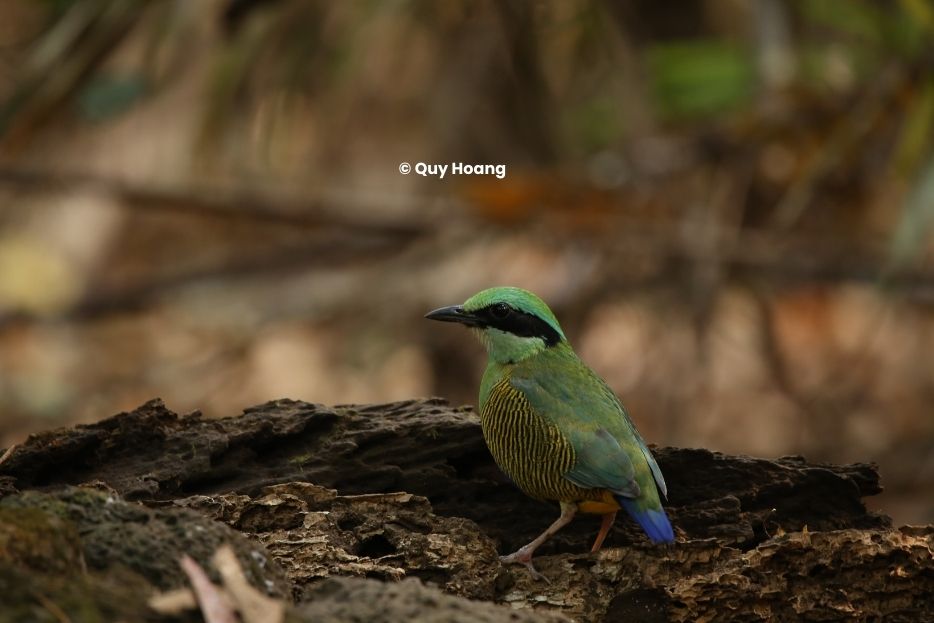
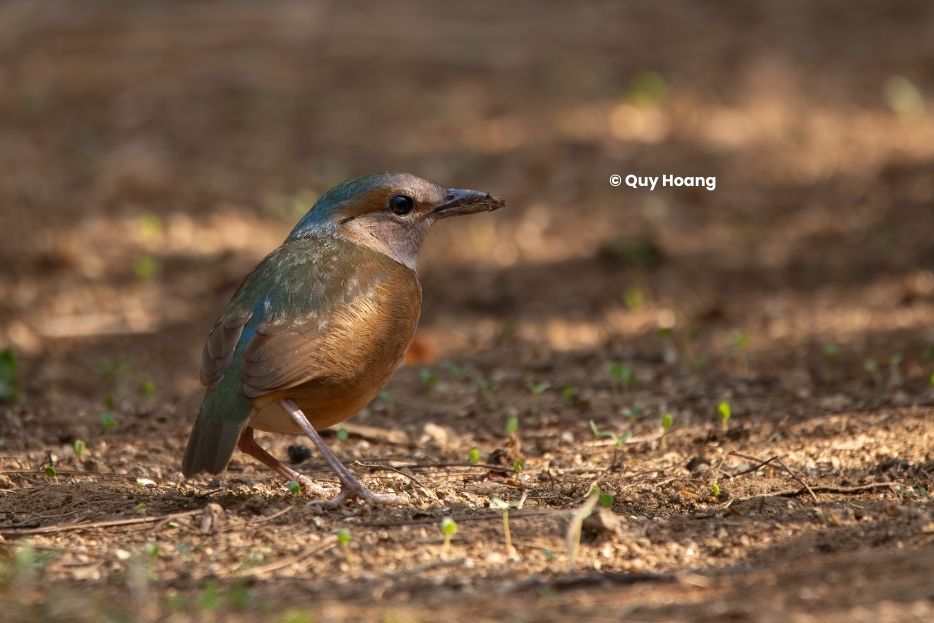
Among the highlights of birdwatching in Cat Tien National Park are the Orange-necked Partridge, Germain’s Peacock Pheasant, Siamese Fireback, Green Peafowl, Wreathed Hornbill, Lesser Adjutant, Woolly-necked Stork, Blue-rumped and Bar-bellied Pittas, Pale-headed and Black-and-buff Woodpeckers, Black-and-red, Banded, Dusky Broadbill, Blyth’s Frogmouth, and Grey-faced Tit Babbler. Cat Tien National Park is the only place in Vietnam where more than three species of pitta can be observed, including year-round residents such as the Bar-bellied Pitta and Blue-rumped Pitta. Additionally, the park offers excellent opportunities to see the Siamese Fireback and Banded Kingfisher. It may also be the last remaining spot in South Vietnam where enthusiasts can encounter the Blyth’s Frogmouth and three different colorful broadbills.


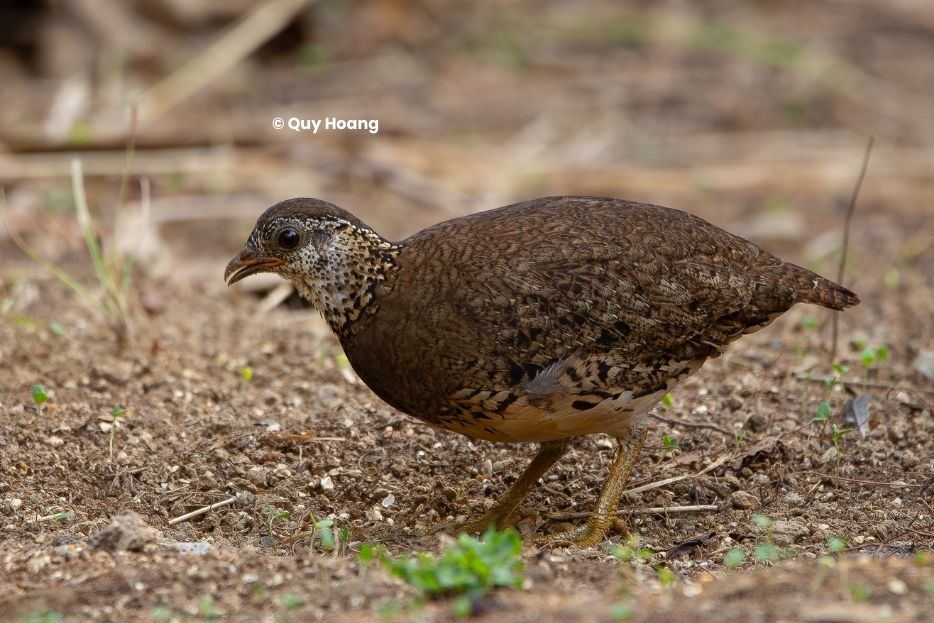
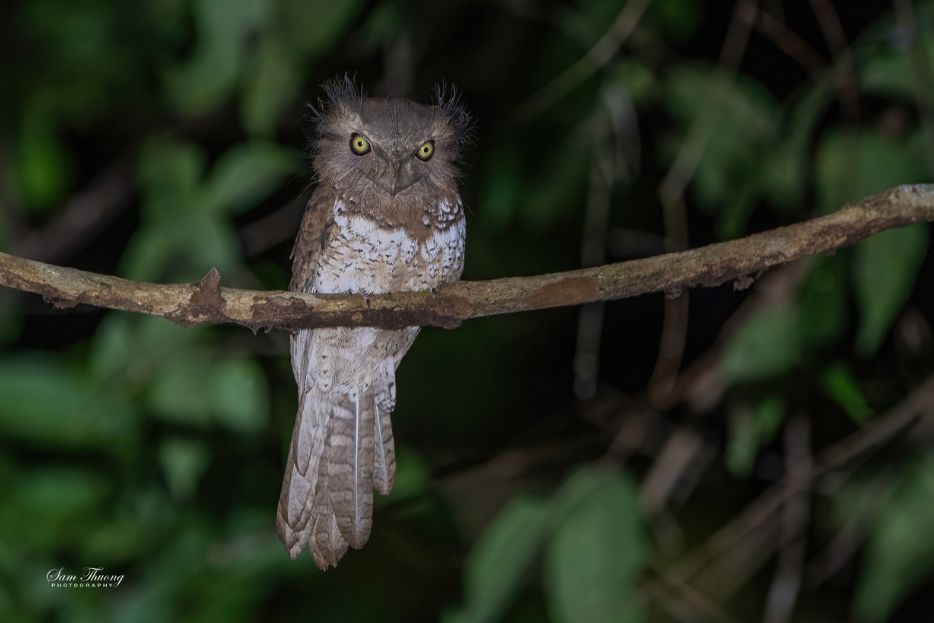
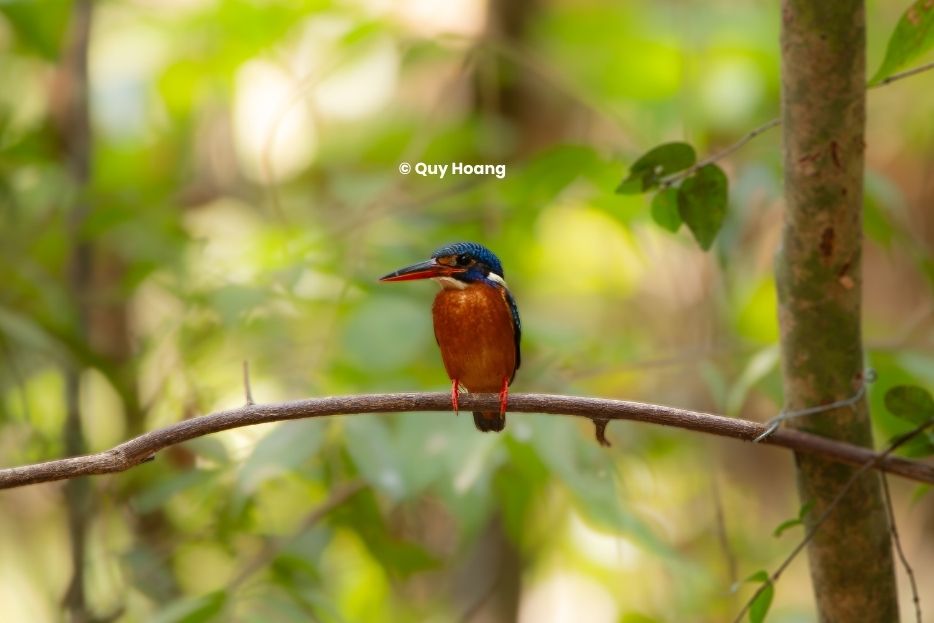
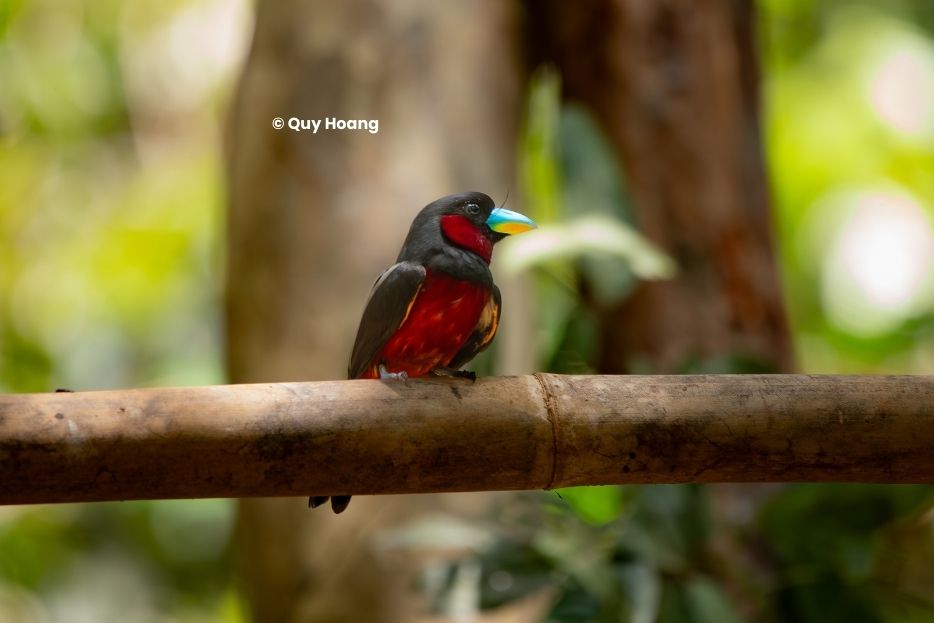
Recently birds list Cat Tien Np. | Printable list here.
When is the best time for birding in Cat Tien national Park
Before focusing on birding we must know
Cat tien Climate (tropical savanna climate with dry winter)
Cat Tien National Park enjoys a tropical savanna climate according to the Köppen-Geiger classification. The average yearly maximum temperature is 33°C, ranging from 31°C in September to 36°C in March. Annual rainfall totals 3412mm, with a minimum of 18mm in February and a maximum of 578mm in August.
In January, the climate is ideal with a maximum temperature of 33°C and an average monthly rainfall of 33mm.
From February to April, the weather remains pleasant, with temperatures reaching up to 35°C.
Between May and November, the climate is tolerable, though still favorable, with temperatures often peaking at 35°C.
December sees good weather conditions, with a maximum temperature around 32°C and an average monthly rainfall of 62mm.
Monthly Averages
Historical monthly average weather conditions for Cat Tien National Park
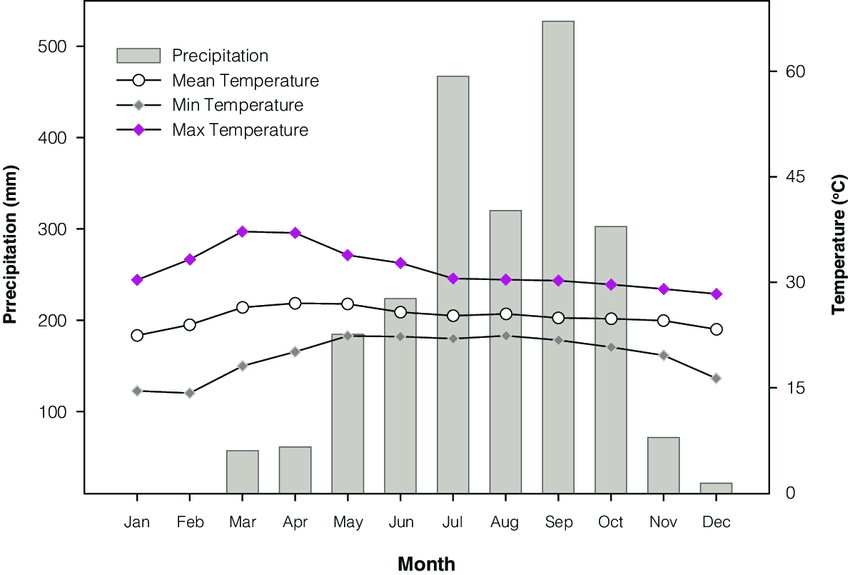
“The best time for birding in Cat Tien is from Nov to Apr when it is not much rain and migratory time”
Where birding in Cat Tien National Park
1. Birdwatching Stations and Hides:
- Park Headquarters Hides:
- First Hide:
- Located near the park headquarters, this hide offers excellent chances to encounter and photograph:
- Germain’s Peacock Pheasant
- Siamese Fireback (morning time)
- Scaly-breasted Partridge
- Orange-breasted Trogon
- Blue-rumped Pitta
- Blue-winged Pitta
- Pin-striped Tit Babbler
- White-crested Laughingthrush
- Blue-bearded Bee-eater
- White-bellied Woodpecker
- Laced Woodpecker
- Black-and-red Broadbill
- Dark-necked Tailorbird
- If lucky, sightings of the rare Fairy Pitta are possible. Each visit to these hides requires a $25 fee per day.
- Located near the park headquarters, this hide offers excellent chances to encounter and photograph:
- Second Hide:
- Located further along the same path but on the opposite side, this hide offers sightings of:
- Orange-necked Partridge (near-endemic)
- Banded Kingfisher
- Blue-winged Pitta
- Orange-breasted Trogon
- Located further along the same path but on the opposite side, this hide offers sightings of:
- Third Hide:
- Deeper behind the headquarters, this hide guarantees sightings of three pitta species:
- Blue-rumped Pitta
- Blue-winged Pitta
- Bar-bellied Pitta
- Each visit to these hides requires a $25 fee per day.
- Deeper behind the headquarters, this hide guarantees sightings of three pitta species:
- First Hide:
- Other Hides:
- There are several other hides located farther from the headquarters, accessible by jeep or bicycle (additional cost required).
- While these hides offer birdwatching opportunities, the chances of sightings are lower compared to those near the park headquarters.
- Each of these hides also requires a $25 fee per day.
2. Birding Hotspots in Cat Tien National Park:
- Grassland:
- This area is ideal for observing:
- Green Peafowl
- Chinese Francolin
- Various doves
- Indochinese Roller
- Additionally, you may encounter mammals such as:
- Deer
- Mongoose
- Gaur
- Mouse Deer
- Muntjac
- This area is ideal for observing:
- Crocodile Lake:
- A prime location for spotting:
- Black-and-red Broadbill
- Banded Bay Cuckoo
- Tailorbirds
- Flowerpeckers
- Bronze-winged Jacana
- Rollers
- Female Peafowl
- Gray-headed Swamphen
- White-breasted Waterhens
- Cormorants
- Osprey
- Gray-headed Fish Eagle
- Fish Owl
- On the way to Crocodile Lake, look out for:
- Peacock Pheasant
- Fireback
- Black-and-buff Woodpecker
- Greater Yellownape
- Great Slaty Woodpecker
- Dusky Broadbill
- Banded Broadbill
- Gray-faced Tit Babbler
- Violet Cuckoo
- Blyth’s Frogmouth
- Spot-bellied Eagle Owl
- Brown Hornbill
- Deer
- Gaur
- Civets
- Francolin
- A prime location for spotting:
- Heaven Rapids:
- Notable for bamboo species and hosts:
- Owls, such as:
- Oriental Bay Owl
- Collared Scops Owl
- Brown Boobook
- Asian Barred Owlet
- Blyth’s Frogmouth
- Brown Fish Owl
- Spot-bellied Eagle Owl
- Nightjars, including:
- Great-eared Nightjar
- Large-tailed Nightjar
- Kingfishers, such as:
- Banded Kingfisher (easiest place without a hide)
- Blue-eared Kingfisher
- Black-backed Dwarf Kingfisher
- Stork-billed Kingfisher
- Pigeons and trogons, including:
- Ashy-headed Green Pigeon
- Orange-breasted Pigeon
- Orange-breasted Trogon
- Broadbills and hornbills, such as:
- Banded Broadbill
- Dusky Broadbill
- Brown Hornbill
- Great Hornbill
- Oriental Pied Hornbill
- Woodpeckers, including:
- Pale-headed Woodpecker (one of the rarest woodpecker species in Vietnam)
- Owls, such as:
- Notable for bamboo species and hosts:
- Lagerstroemia (Tung Tree) and Ecological Trails:
- These trails, starting near the park headquarters, are excellent for finding:
- Germain’s Peacock Pheasant
- Pittas
- Gray-faced Tit Babbler
- Asian Fairy-bluebird
- Trogon
- Banded Kingfisher
- These trails, starting near the park headquarters, are excellent for finding:
- Dak Lua Road:
- Offers easier birding, especially early in the day with potential sightings of:
- Broadbills
- Siamese Fireback
- Offers easier birding, especially early in the day with potential sightings of:
Tips for birding in Cat Tien National Park
1. Essential Gear:
- Binoculars:
- 8×32 binoculars are ideal for clear, steady views.
- 10×32 binoculars are also suitable for greater detail.
- Camera Equipment:
- Use a camera with eye-tracking autofocus for easier bird photography.
- Ensure your camera can shoot more than 10 frames per second.
- A lens of at least 400mm is recommended.
- Field Guides and Apps:
- Carry field guidebooks specific to Vietnamese or Southeast Asian birds.
- Install bird identification apps like Merlin Bird ID or eBird.
- Communication:
- Remember to unpack offline maps and guides as there is no signal in the field.
2. Clothing and Accessories:
- Appropriate Clothing:
- Wear lightweight, breathable clothing in neutral colors.
- Long-sleeved shirts and pants help protect against insects and sun.
- Choose clothing that protects against hard sun and sunburn during the hot season (up to 41°C).
- Ensure your clothing is suitable for the hot and humid climate and protects against leeches.
- Footwear:
- Sturdy, waterproof hiking boots are essential.
- Bring extra socks for wet conditions.
- Other Accessories:
- A wide-brimmed hat provides sun protection.
- Pack a rain jacket or poncho for unexpected showers.
3. Local Guides and Tours Birding in Cat Tien National Park:
- Hiring Local Guides:
- Experienced local guides can help maximize bird sightings.
- Look for recommendations for reputable guides or tour companies.
- Joining Birding Tours:
- Group tours offer shared knowledge and camaraderie.
- Research available birding tours in the park for the best experience.
- Some typical tours
4. Navigating the Park:
- Map and Trail Information:
- Use detailed park maps that highlight birding hotspots and trails.
- Check information on trail difficulty and accessibility.
- Message us to get a map of Cat Tien National Park.
- Transport Options:
- Consider renting a jeep or bicycle to reach distant hides and spots.
- Walking trails are available for closer birding locations.
5. Park Regulations and Etiquette:
- Respecting Wildlife:
- Maintain a safe distance from birds and animals to avoid disturbing them.
- Do not feed any wildlife.
- Environmental Responsibility:
- Carry out all trash and minimize noise to preserve the natural habitat.
- Permits and Fees:
- Entrance fee: 60,000 VND (approximately $3)
- Hide visit fee: $25 per day
6. Health and Safety:
- Insect Protection:
- Use insect repellent to prevent mosquito and tick bites.
- Wear long sleeves and pants for added protection.
- Staying Hydrated:
- Carry sufficient water, especially in hot weather.
- Recognize signs of dehydration and heat exhaustion.
- First Aid:
- Bring a basic first aid kit for minor injuries.
- Know the location of the nearest medical facilities.
7. Recording and Reporting Sightings:
- Keeping a Birding Journal:
- Document bird sightings with notes and sketches.
- Record the date, location, and behavior of birds.
- Using Birding Apps:
- Log sightings on apps like eBird to contribute to citizen science.
- Share rare or unusual sightings with the birding community.
8. Transportation to Cat Tien Naitonal park
Cat Tien is about 3.5 to 4 hours (depending on traffic) by car from Ho Chi Minh City (150 km) and 3.5 hours from Da Lat city. The site is situated off National Highway 20 between Ho Chi Minh City and Da Lat.
- Transportation from Ho Chi Minh City: $20-$40
- Taxi transit for the last 20 km: approximately $70
9. Accommodations
Park Headquarters:
- Motel prices range from 750,000 VND to 1,500,000 VND depending on the room type.
Bau Sau (Crocodile Lake):
- Stay at a ranger station in the heart of the park for 750,000 VND/night (approximately $30/night).
Inside the Park:
- Motel prices range from 750,000 VND to 1,500,000 VND depending on the room type.
Outside the Park:
- Hotels are available at 450,000 VND to 1,200,000 VND but require an entrance ticket for re-entry.
Forest Floor Lodge:
- Located at Ben Cu Rapid, ideal for nature lovers.
- Features solar energy, no AC, limited lighting, and simple accommodations.
- Rooms priced above 1,000,000 VND.
More about Vietnam Birding Tours to Cat Tien National Park
Across Vietnam, conservation efforts are expanding—from reforestation projects to wildlife rescue and habitat protection. At WANEE, we believe that the more we appreciate nature, the more we’ll want to protect it. That’s why our tours are designed to inspire a deeper love for wildlife and a stronger commitment to conservation. While trying harder every day to protect the balance of nature, our wildlife tours give tourists the chance to explore Vietnam’s natural beauty, understand how different habitats connect, and take action to protect them.
Visit our sites:
– Facebook: WANEE Vietnam (Wild and Nature Exploring)
– Instagram: WANEE Vietnam and WANEE Kids hub
Are you looking for Wildlife Tours in Vietnam?
WANEE VIETNAM is your go-to destination for "Wildlife Tours in Vietnam", specializing in Birding, Primate Watching, Herping, Photography Tours and Educational Tours led by our expert guides.Hot-spot for Birding in Vietnam
all birding in hot-spot informative info [updated Jan 2023]
Nr. Nature reserve; Np. National Park; mt. Mountain








Thank you for this information Hoang we are in contact and already got a quote from Thang with 4 days photography tours including the first day MA DA and the 3 days in Cat Tien. Looking forward to meet you. This will be March